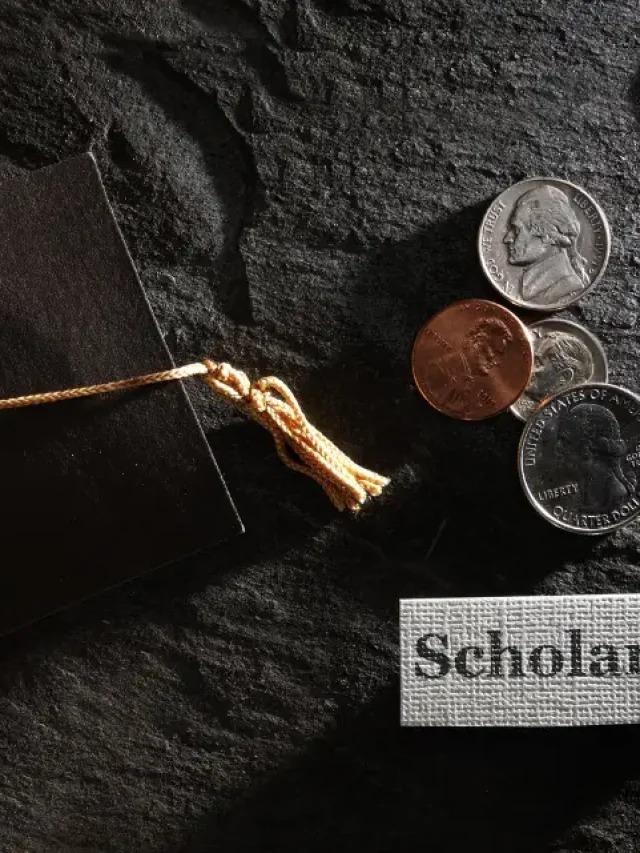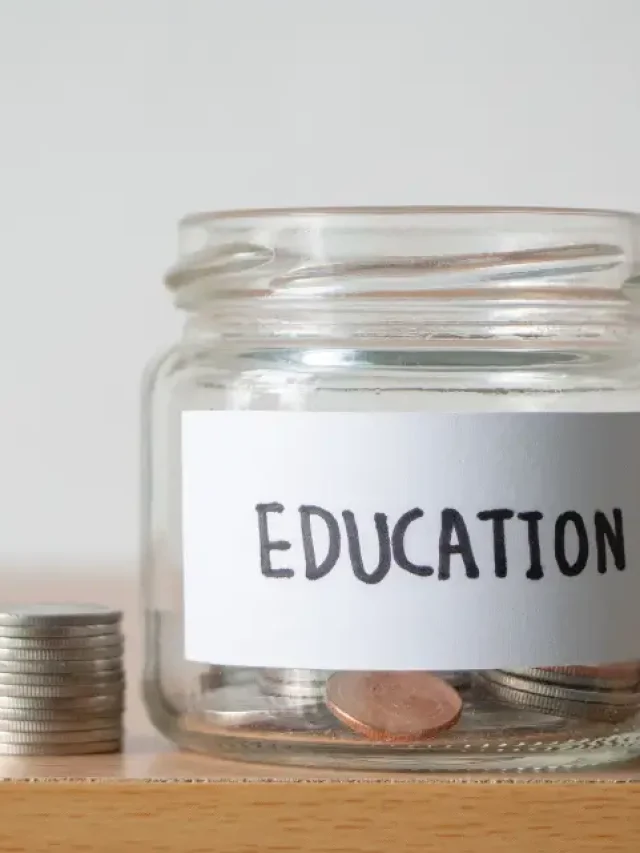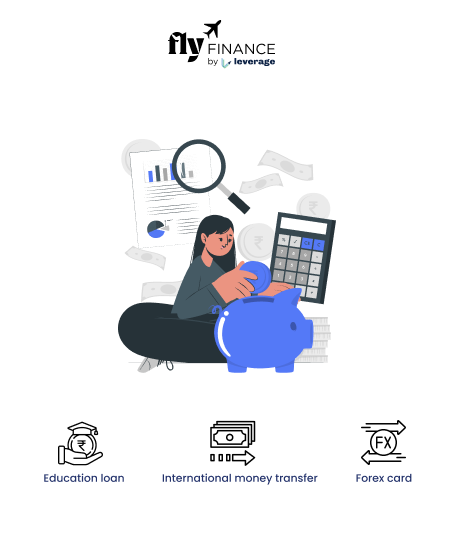Banking is a vital part of our daily lives, especially for students who are just starting to manage their finances. Whether you’re saving pocket money, applying for an education loan, or opening your first savings account, understanding banking terms can make a big difference. One such term you might come across is “lien.” But what is lien in banking, and why does it matter to you?
In this blog, we’ll understand “What is Lien in Banking”, how it works in the banking system, and what it means for your financial journey. Let’s get started!
Table of contents
What is Lien in Banking?
A lien is a legal right that a bank or financial institution has over your property or funds. In simpler terms, it’s like a “hold” the bank places on your money or assets to ensure you meet certain obligations, such as repaying a loan.
For Indian students, lien might sound complicated, but it’s a common practice in banking to protect both the bank and the account holder.
When a lien is applied, you cannot freely use the money or property under it until the bank’s conditions are fulfilled. This concept is rooted in Indian laws, like the Indian Contract Act, 1872, and is widely used by banks. Let’s understand why it exists and where it usually applies.
- Why does Lien exist? Basically, Lien acts as a safety net for banks to recover their money if you fail to repay a debt.
- Where do you see Lien? Lien often applies to savings accounts, fixed deposits, or even assets like gold pledged for a loan.
Also Read: Using SIPs to Repay Education Loans More Efficiently
How Does a Lien Work in Banking?
Now that you know what a lien in banking means, let’s explore how it actually works. Imagine you’ve taken a small education loan from a bank to pay your college fees. The bank might place a lien on your savings account or fixed deposit as security.
This ensures that if you don’t repay the loan in the given education loan repayment time, the bank can use those funds to cover the debt.
Here’s a step-by-step look at how a lien operates:
- Agreement: When you borrow money, you sign an agreement allowing the bank to place a lien on your assets.
- Marking the Lien: The bank “marks” a specific amount in your account or asset, restricting access to it.
- Repayment: Once you repay the loan, the lien is lifted, and you regain full control over your funds.
- Default: If you don’t repay, the bank can legally use the lien-marked funds to recover its money.
For example, if you have INR 50,000 in your savings account and borrow INR 30,000, the bank might freeze INR 30,000 under a lien until the loan is cleared.
Types of Liens in Banking
Liens come in different forms, and understanding them can help you manage your finances better. Banks in India use these types based on the situation and agreement with the customer. Let’s look at the main types:
- General Lien: This gives the bank rights over all your assets with them for any unpaid debt. For instance, SBI might apply a general lien if you owe money across multiple accounts.
- Particular Lien: This applies only to a specific asset tied to a particular loan. For example, a lien on a fixed deposit for an education loan.
- Statutory Lien: This is enforced by law, such as when the government or tax authorities instruct a bank to freeze your account for unpaid taxes.
What is Floating Lien?
Floating Lien is often used in business loans, this type applies to assets that change, like a company’s inventory. It’s less common for students but worth knowing if you explore entrepreneurship later.
What is Second Lien?
Second Lien occurs when a second loan is taken against an asset already under a primary lien, like a home equity loan on a house with an existing mortgage. The first lienholder gets paid before the second, making second liens riskier for lenders.
Why Should You Care About Liens?
As a student, you might wonder how liens affect you directly. While you may not deal with large loans yet, understanding this concept prepares you for future financial decisions—like taking an education loan or managing a savings account.
Banks in India, including public sector banks and private banks use liens regularly. Here’s why it matters to you:
- Education Loans: Many students rely on loans for higher studies. A lien on your or your parents’ fixed deposit might be required as collateral.
- Account Management: If a lien is placed on your savings account, you can’t withdraw that money until the issue is resolved.
- Financial Planning: Knowing about liens helps you avoid surprises and plan your finances wisely.
Also Read: Public vs Private – Education Loan
Advantages of Liens in Banking
Liens offer benefits to both banks and borrowers, making them a practical tool in financial dealings. Here’s why they’re valuable:
- Protection for Lenders: Liens secure a bank’s money by guaranteeing recovery if a borrower defaults.
- Encouragement for Borrowers: The possibility of losing assets pushes you to repay on time.
- Legal Backing: Banks can recover dues through liens without needing extra contracts, simplifying enforcement.
- Clarity for All: When liens are publicly recorded, they inform buyers and lenders about any claims on an asset, promoting transparency.
- Loan Access: Even without cash, you can borrow by offering assets as security under a lien.
These advantages make liens a win-win in many cases, especially for students seeking affordable loans.
Challenges of Liens in Banking
While liens have benefits, they also come with drawbacks that students should be aware of. Here’s what can make them tricky:
- Restricted Assets: You can’t sell or transfer property under a lien until the debt is cleared, limiting your options.
- Complicated Process: Resolving or removing a lien involves legal steps that can be time-consuming and costly.
- Marketability Issues: A lien on an asset, visible in public records, might discourage buyers, reducing its value or appeal.
Being aware of these challenges helps you plan ahead and avoid potential hurdles.
How to Handle a Lien on Your Account?
Finding out that a lien has been placed on your account can feel overwhelming, but it’s manageable with the right steps. Whether it’s due to a loan or a legal issue, here’s what you can do:
- Check with Your Bank: Contact your bank (e.g., via customer care or a branch visit) to understand why the lien was applied.
- Clear the Obligation: Pay off the loan or resolve the issue (like unpaid dues) to remove the lien.
- Request Removal: Once settled, ask the bank to lift the lien and restore access to your funds.
Pro Tip: Always read the fine print when signing loan agreements to know if a lien is involved.
Also Read: Early Repayment Charge of Education Loan
Understanding what a lien in banking means is a key step toward financial literacy for Indian students. It’s not just a technical term—it’s a practical concept that affects how you borrow, save, and manage money. By knowing how liens work, their types, and their impact, you can make smarter decisions and avoid unnecessary stress.
FAQs on What is Lien in Banking
A lien in banking is a legal right that allows a bank to hold or restrict access to your funds or property until a debt is repaid. It acts like a “freeze” on your account or assets to ensure loan recovery. This is a common practice used to protect the bank’s interest in case of non-repayment.
Banks place liens to secure their money when they lend to borrowers. If a borrower fails to repay the loan, the lien gives the bank the legal authority to use the marked funds or assets. It’s a safety measure that protects the bank from financial loss.
When a lien is placed on your savings account, you cannot withdraw or transfer the lien-marked amount. That portion of your funds is locked until the debt or obligation is cleared. This can affect your financial flexibility until the issue is resolved.
There are several types of liens in banking: general lien, particular lien, statutory lien, floating lien, and second lien. Each type serves a different purpose based on the loan agreement or legal requirement. Understanding these types helps you manage your finances more wisely.
A general lien allows the bank to claim any of your assets held with them to recover any unpaid dues. In contrast, a particular lien applies only to a specific asset tied to a particular loan, like a fixed deposit used as collateral. The scope and conditions of each lien are different.
Yes, students can be affected, especially if they take education loans backed by a fixed deposit or other assets. The bank may place a lien on those assets until the loan is fully repaid. This helps ensure repayment while giving students access to loans.
A statutory lien is enforced by law and does not require the customer’s consent. It typically occurs when government agencies direct the bank to freeze funds for unpaid taxes or legal dues. This type of lien is compulsory and legally binding.
If you fail to repay the loan, the bank has the right to use the lien-marked funds or assets to recover the outstanding amount. This may include deducting money from your account or selling the asset. The lien ensures that the bank recovers its dues with minimal legal hassle.
To remove a lien, you must clear the dues or resolve the issue for which the lien was placed. After repayment or settlement, you can request the bank to lift the lien. Once removed, you’ll regain full access to your funds or assets.
A lien on your bank account means the bank has placed a legal hold on your funds. This usually happens if you owe money, like an unpaid loan or credit card bill. To find out the exact reason, contact your bank and ask for details.
An example of a lien is when you take an education loan and the bank places a hold on your fixed deposit. Suppose you have INR 50,000 in a fixed deposit and borrow INR 30,000 for college fees. The bank might mark INR 30,000 of your deposit under a lien, restricting access until you repay the loan.
The lien amount itself isn’t “refunded” because it’s not money taken away—it’s your own funds or assets temporarily locked by the bank. Once you clear the debt or obligation tied to the lien, the bank releases the hold, and you regain full access to that amount.
To learn more about bank accounts for students, the best education loans, forex, banking experience for global students, or international money transfers, reach out to our experts at 1800572126 to help ease your experience with studying abroad.
Follow Us on Social Media





























